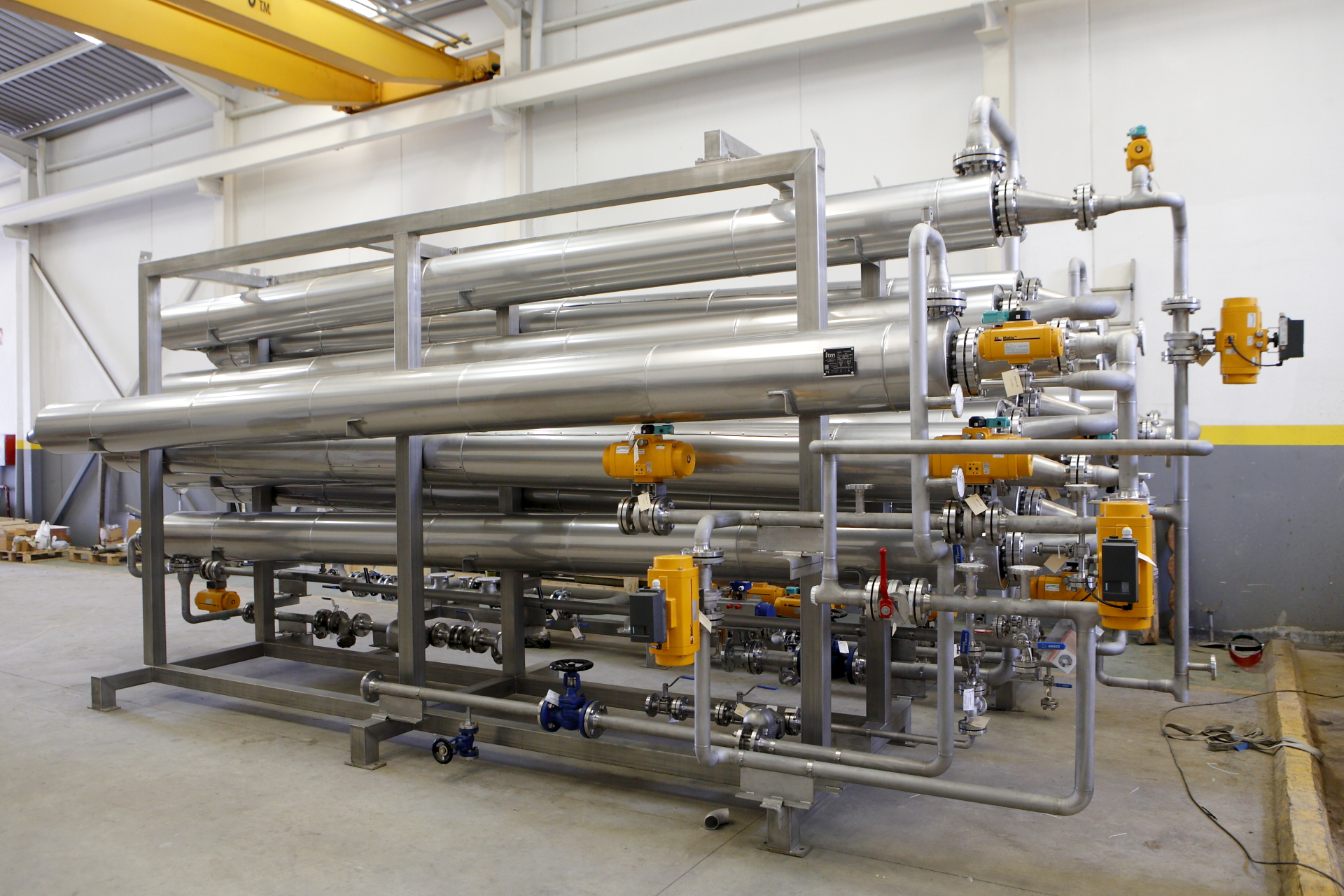It is not necessary to emphasize the critical importance of the energy consumption in the costs when refining oil, as well as in processes of biodiesel production. Using energy in the most economical way is one of the biggest concerns for vegetable oils producers, hence energy recovery and reduction in the consumptions become in main objectives in the design of the equipment to be used, being this applicable as oil circulation circuits as any other fluids, i.e., glycol, where waste heat of different streams in different areas of the installation can be used in closed loop to increase its temperature up to using point temperature.
Therefore, when designing and selecting the most suitable heat exchangers, it must be taken into account the different phases of operation, as start-up and shutdown, which must be checked as from thermal point of view, as mechanical one, since they could involve stress situations affecting to the good performance of the equipment and/or the whole installation. At the same time, it must be considered the fact that, these heat exchangers, for heat recovery or heating and cooling vegetable oils, must work in perfect concordance with other parts of the process, as deodorization, degumming, or neutralizing, where an exhaustive control of the temperature is required. Finally, it cannot be obviate during calculations and subsequent selection of the heat exchanger that the payback time must be the shortest possible.
HEAT RECOVERY IN VEGETABLE OILS
The objective is to make the most of the heat in the refined oil to pre-heat other oil streams, as crude or degummed oil. In order to a get a balanced situation between the costs of the equipment and the investment to be carried on, and the energy-economical saving, different percentages of heat recovery should be checked.
HEATING VEGETABLE OILS
In this case, where it is usual to heat vegetable oil using steam, it is important to consider, not only the stationary working condition, but also the start up condition, since in this case, due to the fact that heat recovery is not happening, the heat exchanger must work in worse conditions, as mechanically as thermally, due to a larger specific steam requirement. According to that, two different scenarios could be considered, one, where the heat exchanger would be designed following the start up condition, so in stationary working conditions with heat recovery, the heat exchanger would work oversized, or, secondly, using start up conditions with smaller oil flow rates, which would be progressive increased up to get stationary process.
COOLING VEGETABLE OILS
In the same way we should consider the start up condition when speaking about the vegetable oils heater, in this case, it would be necessary to consider, not only the stationary working conditions, but also the shutdown condition, where the hot oil coming from the deodorizer must be cooled to the final temperature without any kind of pre-cooling by other oil stream.
It could be considered a progressive reduction of the oil flow rate up to final stop looking for avoiding an over-sizing of the heat exchanger when working in heat recovery conditions.
It is remarkable in this case, the importance of a correct mechanical design of the heat exchanger, because of the thermal shock caused for the contact between the hot oil at very high temperature with the cooling media, water, glycol, or whatever, as well as the correct disposition of the baffles inside the shell to get the biggest possible thermal transference.
REMELTING MARGARINE
As a special case, we can consider the heat exchangers to re-melt margarine, looking for making easy its circulation inside the piping, as well as the case of cooling for filling. Due to the semi-solid state of the margarine, to use plain tubes causes circulation in laminar conditions, while using corrugated tube allows increasing the turbulence of the fluid, with the consequent increase in the thermal transference during those processes.
Another important fact to be considered is the usual high content in salts in the margarine. This makes necessary a hygienic design of the heat exchangers, and a careful selection of the materials to be used in the manufacture of them to avoid appearance of corrosion phenomenon.
Geometry
A number of tubes inside a jacket with one pass on product circuit. The Multitube ITMb is a welded corrugated heat exchanger. Flanged tube sheet allows you an easy and quick visual inspection. We understand that hygienic equipment must be cleaned easily. It is preferable to have the possibility of inspecting the sanitary side, in our case, the inner tubes.
Important Features
All the above, together with the fact of a restrictive working conditions due to high temperatures and big pressures, make using the tubular heat exchangers with corrugated tubes to be the most suitable from mechanical and thermal point of views, since they show some advantages compared to other heat exchangers, as:
- Top mechanical resistance in high temperature & pressure working conditions than other type of heat exchangers, as plate heat exchangers or spiral ones.
- Smaller size of the heat exchanger in the installation.
- Smaller volume in oil side. This point is very important in those cases where different kind of oils are processed in continuous in the same installation, since the amount of oil remaining inside the heat exchanger is smaller than in the case of heat exchangers with plain tubes, which involves a lower cost.
- Self-drainability of heat exchanger, allowing to recover the most of · the oil remaining inside the heat exchanger in shutdown working conditions.
- Cheaper maintenance costs due to the absence of spare gaskets.
- Lower level of fouling, which makes easiest to process different types of oil.
- Lower pumping costs, due to a lower pressure drop than in plain tubes heat exchangers, which mean lower economical impact.



